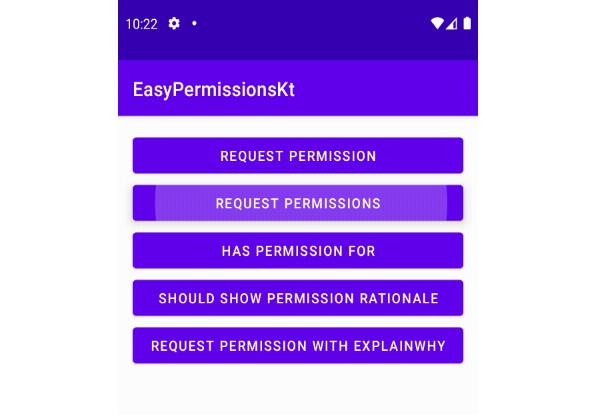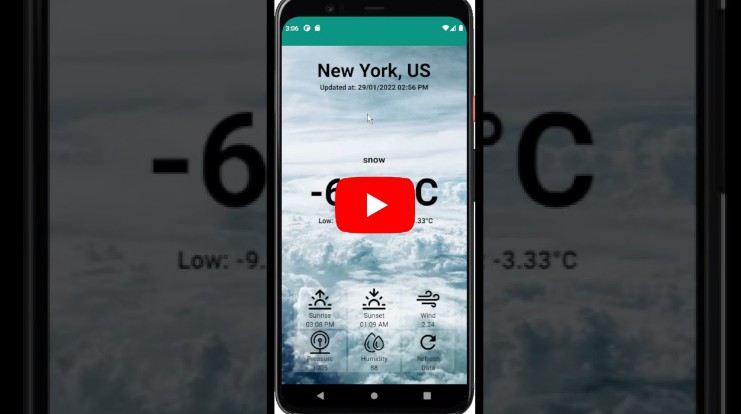Easy Permissions Kt
EasyPermissionsKt is a lightweight Android library that abstracts all runtime permission boilerplate code to simplify the system permissions management.
The lib is lifecycle aware and uses the new recommended way to get results from activities (https://developer.android.com/training/basics/intents/result?hl=pt-br)
How to add
Step 1. Add the JitPack repository to your build file
allprojects {
repositories {
...
maven { url 'https://jitpack.io' }
}
}
Step 2. Add the dependency
Gradle:
dependencies {
implementation 'com.github.wellingtoncabral:android-easy-permissions-kt:<LATEST-VERSION>'
}
Kotlin:
dependencies {
implementation ("com.github.wellingtoncabral:android-easy-permissions-kt:$LATEST_VERSION")
}
How to use
Register the EasyPermissionKt and implement the result callback. The result can be handled in 3 states as described below:
Using from Activities
class MyActivity : AppCompatActivity() {
...
private val easyPermission = registerForPermissionsResult {
whenPermissionGranted {
// All permissions granted
TODO()
}
whenPermissionShouldShowRationale { permissions ->
// Permissions denied but not permanently.
// The app should show a rationale to the user in
// a UI element.
// @see [https://developer.android.com/training/permissions/requesting#explain]
TODO()
}
whenPermissionDeniedPermanently { permissions ->
// Permission denied permanently
TODO()
}
}
}
Using from Fragments
// Using from Fragment
class MyFragment : Fragment() {
private lateinit var easyPermission: EasyPermissionKt
override fun onCreate(savedInstanceState: Bundle?) {
super.onCreate(savedInstanceState)
easyPermission = registerForPermissionsResult {
whenPermissionGranted {
TODO()
}
whenPermissionShouldShowRationale { permissions ->
TODO()
}
whenPermissionDeniedPermanently { permissions ->
TODO()
}
}
}
}
To request permissions, just call the requestPermissions function passing one or more permissions as shown below:
// Requesting permission or permissions
easyPermission.requestPermissions(
Manifest.permission.CAMERA,
Manifest.permission.WRITE_EXTERNAL_STORAGE
)
It is also possible to create an explanatory UI for the user before asking for permission.
The implementation below uses WithDialog which creates a native AlertDialog.
// Requesting permission with an explain why dialog
easyPermission
.explainWhy(
WithDialog(
title = "Permission Request",
description = "To easily connect with family and friends, allow the app access to your contacts",
positiveButtonText = "Continue",
negativeButtonText = "Not now"
)
)
.requestPermissions(Manifest.permission.READ_CONTACTS)
However, you can create any UI. Just create a class and implement the ExplainWhyUI interface.
In the show() method use the lambda continuation parameter to decide if the API continues with the request or cancels.
Features
The EasyPermissionKt library supports the following features:
fun requestPermissions(vararg permissions: String)
fun hasPermissionFor(vararg permissions: String): Boolean
fun shouldShowRequestPermissionRationale(permission: String): Boolean
fun explainWhy(explainWhyUI: ExplainWhyUI): EasyPermissionKt





